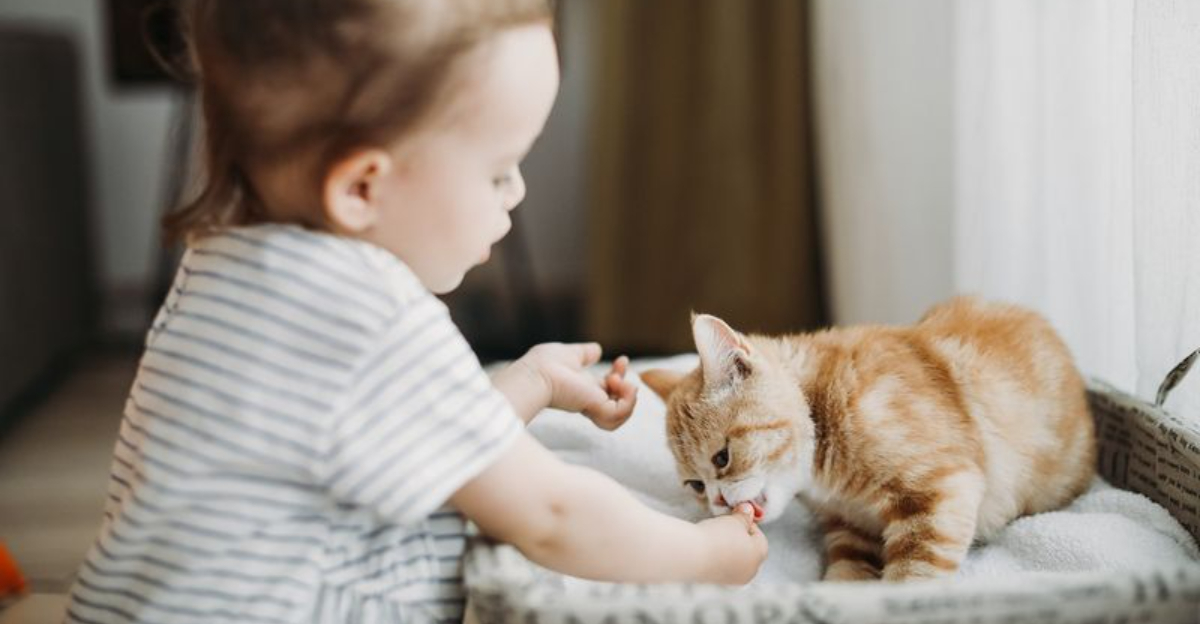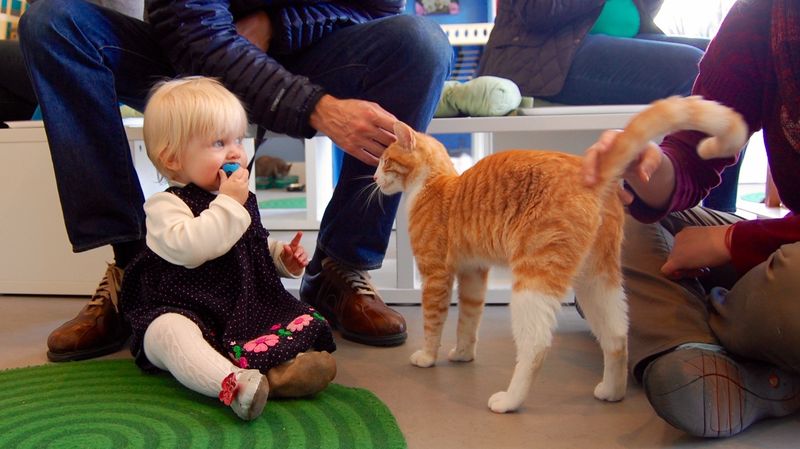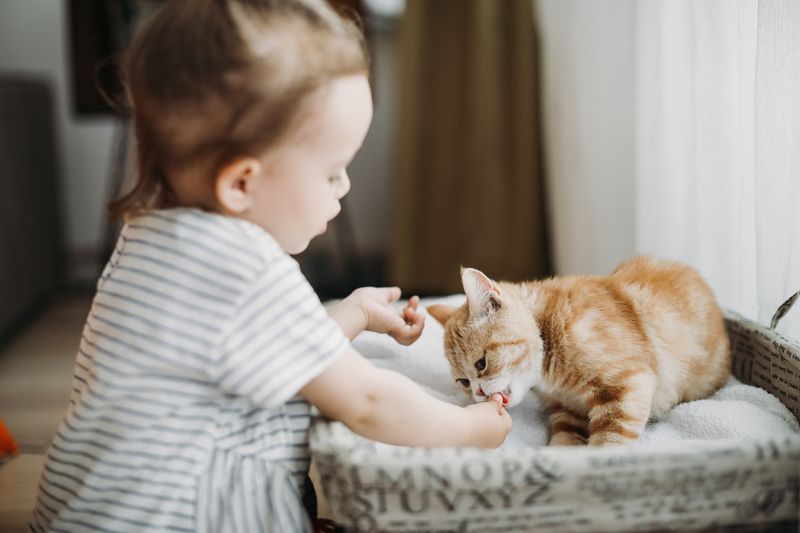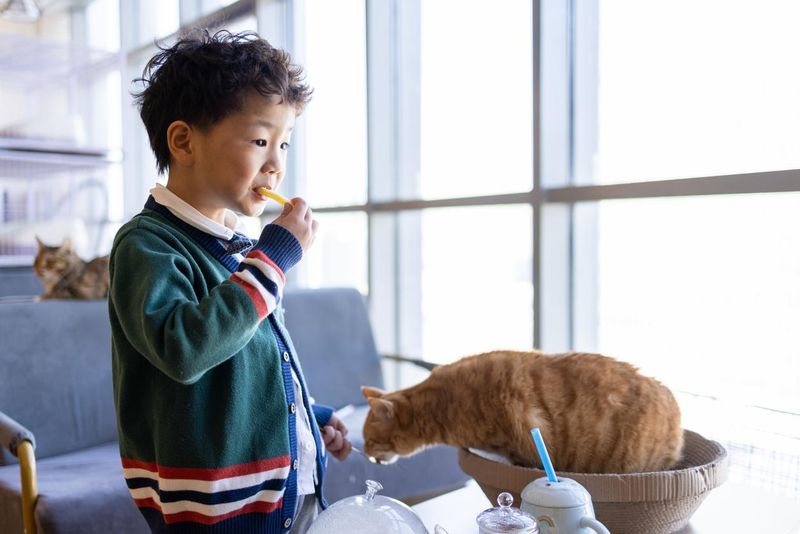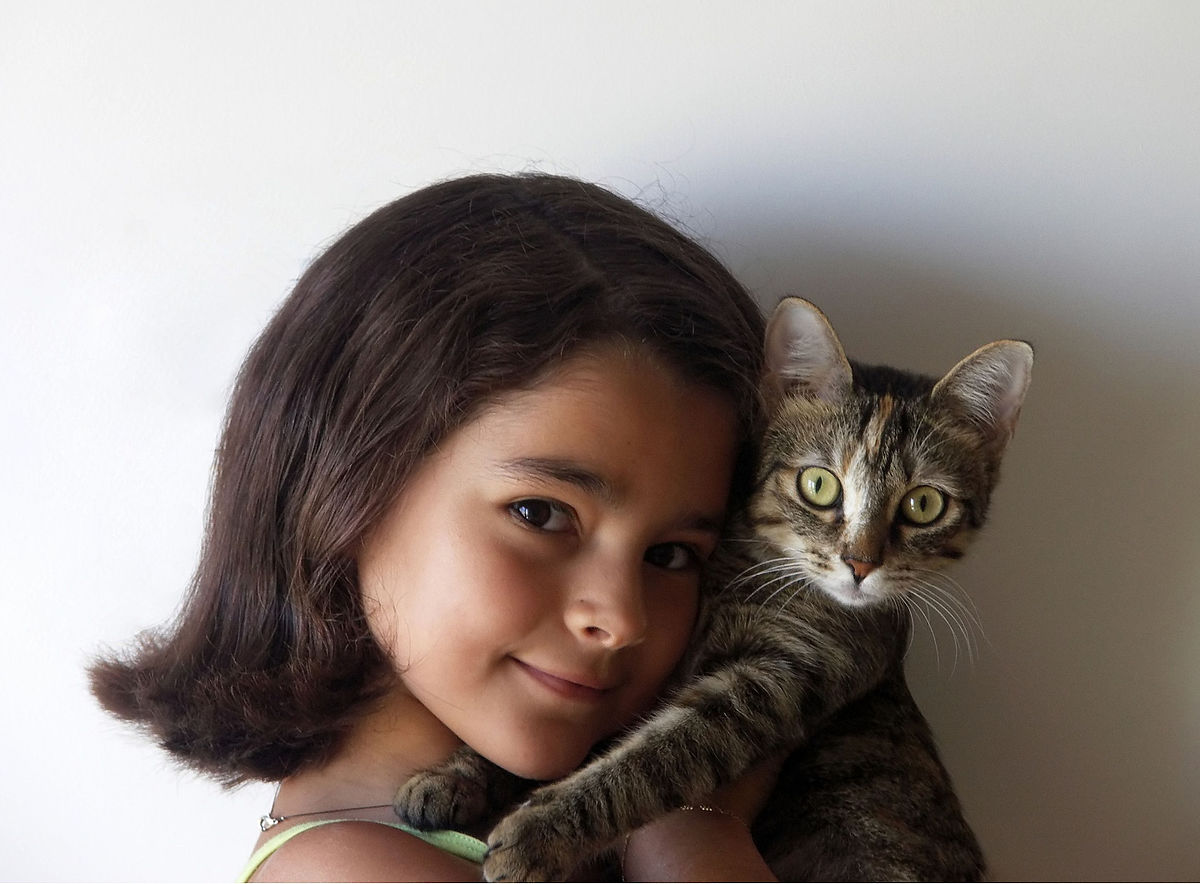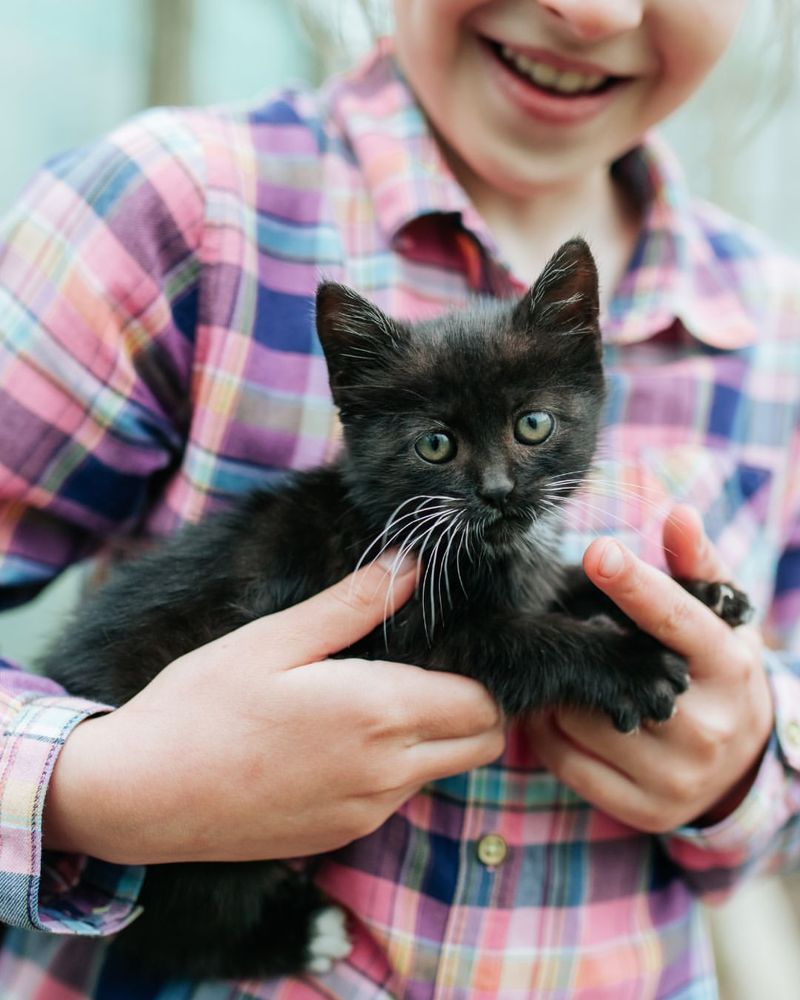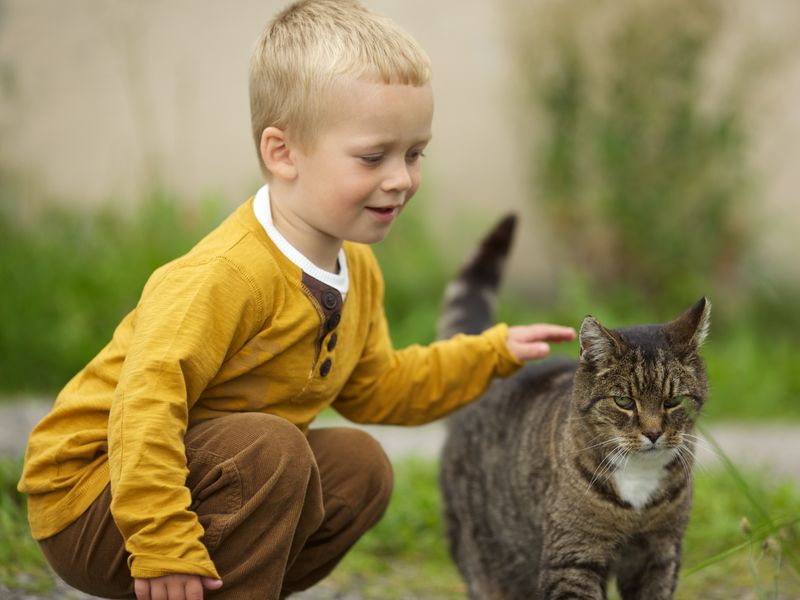📖 Table of Content:
- 1. Teach Gentle Handling
- 2. Supervise Early Interactions
- 3. Respect the Cat’s Space
- 4. Create Safe Zones
- 5. Encourage Playtime with Toys
- 6. Teach Proper Feeding Etiquette
- 7. Use Positive Reinforcement
- 8. Read Cat Books Together
- 9. Show the Right Way to Pick Up a Cat
- 10. Make Grooming Fun
- 11. Create a Routine Together
- 12. Teach Body Language Signals
- 13. Play “Cat Whisperer” Games
- 14. Model Kindness and Patience
- 15. Celebrate Their Bond
Bringing a cat into your family can be a wonderful experience, especially when children are involved. Cats are affectionate, playful, and can form deep bonds with their human companions. However, fostering a positive relationship between a child and a cat requires guidance, patience, and understanding. Teaching your child how to interact with their feline friend in a respectful and loving way will not only ensure a strong bond but also create a safe and harmonious environment for both of them.
While cats are known for their independence, they also crave companionship and affection when approached correctly. Children, on the other hand, are naturally curious and may not always understand the boundaries that cats need. Without proper guidance, misunderstandings can occur, leading to frustration for both the child and the pet. By setting clear expectations and teaching essential pet care and communication skills, you can help nurture a relationship based on mutual trust and love.
From teaching gentle handling techniques to recognizing feline body language, these tips will help build a lasting bond. Whether you’re introducing a new kitten to your family or strengthening the connection between your child and an existing pet, these strategies will pave the way for a lifelong friendship filled with love and joy.
1. Teach Gentle Handling
Introduce your child to the art of gentle handling, a crucial step in fostering a bond with your cat. Show them how to softly stroke the cat’s back, avoiding sensitive areas like the tail and ears. Demonstrating how to approach the cat calmly can set the foundation for a trusting relationship. Use plush toys to practice, ensuring the child understands the boundaries of gentle touches. Encourage them to speak softly to the cat, reinforcing the importance of a gentle approach. This initial lesson can pave the way for a lasting and loving friendship between your child and the feline.
2. Supervise Early Interactions
Supervision is key when your child and cat first start interacting. Always be present to guide their interactions, preventing any accidental rough play. By observing, you can step in to correct behavior, teaching your child to read cat’s signals. This not only safeguards both parties but also ensures the cat feels secure around the child. As your child learns to interpret the cat’s signals, they will grow more confident in their interactions. Over time, this vigilance will help in building a safe environment conducive to friendship.
3. Respect the Cat’s Space
Teach your child the importance of respecting the cat’s personal space. Cats, like people, need their alone time, and it’s crucial to acknowledge when they want it. Explain to your child that if the cat retreats to a quiet corner or refuses to play, it’s not personal. Encourage them to wait patiently and not to force interaction. By respecting these boundaries, your child shows empathy and understanding, essential qualities for a strong bond. This respect will help the cat feel more comfortable and trustful towards your child.
4. Create Safe Zones
Providing safe zones for your cat is essential for its comfort and security. Show your child how these zones, like a cozy cat bed or high perch, give the cat a retreat when feeling overwhelmed. Explain how these spaces are the cat’s sanctuary, and encourage your child to respect this by not disturbing the cat when it’s resting there. Understanding the importance of these safe zones will help your child recognize when the cat needs solitude, supporting a peaceful coexistence and strengthening their friendship.
5. Encourage Playtime with Toys
Interactive play is vital for strengthening the bond between your child and your cat. Equip your child with fun, safe toys like feather wands or balls that engage the cat in lively activities. Playtime should be a regular part of their routine, offering both exercise and enjoyment for the cat. This shared activity can create joyful experiences and help your child learn about the cat’s playful nature. Encouraging your child to initiate these playful interactions can lead to memorable bonding moments, filled with laughter and discovery.
6. Teach Proper Feeding Etiquette
Feeding etiquette is crucial for maintaining your cat’s health. Teach your child that only adults should handle feeding to prevent overfeeding or offering unsuitable foods. Explain the importance of a balanced diet and how certain human foods can be harmful to cats. This knowledge helps your child understand boundaries and responsibility. While your child can assist in preparing the feeding area, reinforcing that feeding is an adult task ensures safety. This lesson in responsibility can aid in nurturing respect for the cat’s needs and routines.
7. Use Positive Reinforcement
Positive reinforcement is a powerful tool in teaching your child to interact kindly with your cat. Encourage your child by praising and rewarding good behavior when they treat the cat gently. This method not only recognizes their efforts but also motivates them to continue being compassionate. Rewards could be as simple as verbal praise or small treats. Reinforcing these positive interactions will help your child understand the value of kindness and patience, creating a nurturing environment for the friendship to flourish.
8. Read Cat Books Together
Reading books about cats can be an enjoyable way for your child to learn about feline behavior and needs. Choose age-appropriate books that explore cat habits, emotions, and care tips. Through stories, children can gain insights into their cat’s world, fostering understanding and empathy. This shared activity also provides a bonding opportunity for both your child and you. Encourage discussions about what you’ve read, allowing your child to express their thoughts and ask questions. This knowledge can enhance their interactions, creating a deeper bond with their furry friend.
9. Show the Right Way to Pick Up a Cat
If your cat is comfortable with being picked up, teach your child the proper technique to ensure both parties are safe and comfortable. Demonstrate how to support the cat’s body fully, avoiding any strain or discomfort. Explain that not all cats enjoy being lifted, so it’s important to recognize when the cat prefers to stay on the ground. By teaching this skill, you help your child respect the cat’s comfort levels, preventing potential mishaps. This lesson fosters a sense of responsibility and care in your child, essential for nurturing their bond.
10. Make Grooming Fun
Grooming can be a delightful bonding activity if your cat enjoys it. Allow your child to participate in brushing sessions, teaching them to use gentle strokes with a soft brush. Explain the benefits of grooming, like reducing shedding and promoting healthy fur. Make it a fun and relaxing time by talking softly or playing calming music. This activity not only helps in keeping the cat well-groomed but also strengthens the trust between your child and the cat. Shared grooming sessions can become a cherished routine, deepening their connection.
11. Create a Routine Together
Establishing a routine can bring comfort and predictability to your cat’s life. Involve your child in daily rituals, like greeting the cat in the morning or saying goodnight. These consistent actions help the cat feel secure and loved, as well as teach your child the importance of routine in pet care. They can also serve as gentle reminders of the responsibilities involved in having a pet. By being part of the cat’s daily routine, your child learns about commitment and care, reinforcing their role in the cat’s life and strengthening their bond.
12. Teach Body Language Signals
Understanding a cat’s body language is key to preventing misunderstandings and fostering a harmonious relationship. Teach your child to recognize signs of happiness, fear, or annoyance in your cat. Explain indicators like a wagging tail or flattened ears, which can signal different emotions. Encourage your child to observe these cues during interactions, guiding them in responding appropriately. This knowledge empowers your child to interact more confidently and sympathetically with the cat, reducing the chances of accidental mishandling and promoting a deeper understanding and bond.
13. Play “Cat Whisperer” Games
Turn learning into fun by playing “Cat Whisperer” games with your child. Challenge them to interpret the cat’s mood based on its behavior, making it a playful and educational experience. These games encourage observation and critical thinking, helping your child better understand the cat’s needs and emotions. You can use scenarios or real interactions to discuss what different body language might mean. This interactive approach not only educates but also entertains, laying the groundwork for a deeper, more empathetic connection with the cat.
14. Model Kindness and Patience
Children learn by example, making it crucial to model kindness and patience in all interactions with your cat. Show your child how to approach the cat calmly, use gentle touch, and speak softly. Your behavior sets the standard, teaching your child respect and empathy through your actions. Engage your child in these moments, explaining the importance of each kind gesture. By observing and imitating your interactions, your child will naturally adopt these positive behaviors, fostering a loving and patient relationship with the cat.
15. Celebrate Their Bond
Encourage your child to celebrate their bond with the cat by engaging in creative activities. Suggest drawing pictures, taking photos, or telling stories about their friendship with the cat. These expressions allow your child to reflect on their relationship, appreciating the unique connection they share. Creative activities also provide an outlet for expressing emotions and thoughts. By celebrating this bond, your child learns to cherish and value their friendship with the cat, strengthening their sense of companionship and joy. This celebration can be a joyful and affirming part of their relationship.
